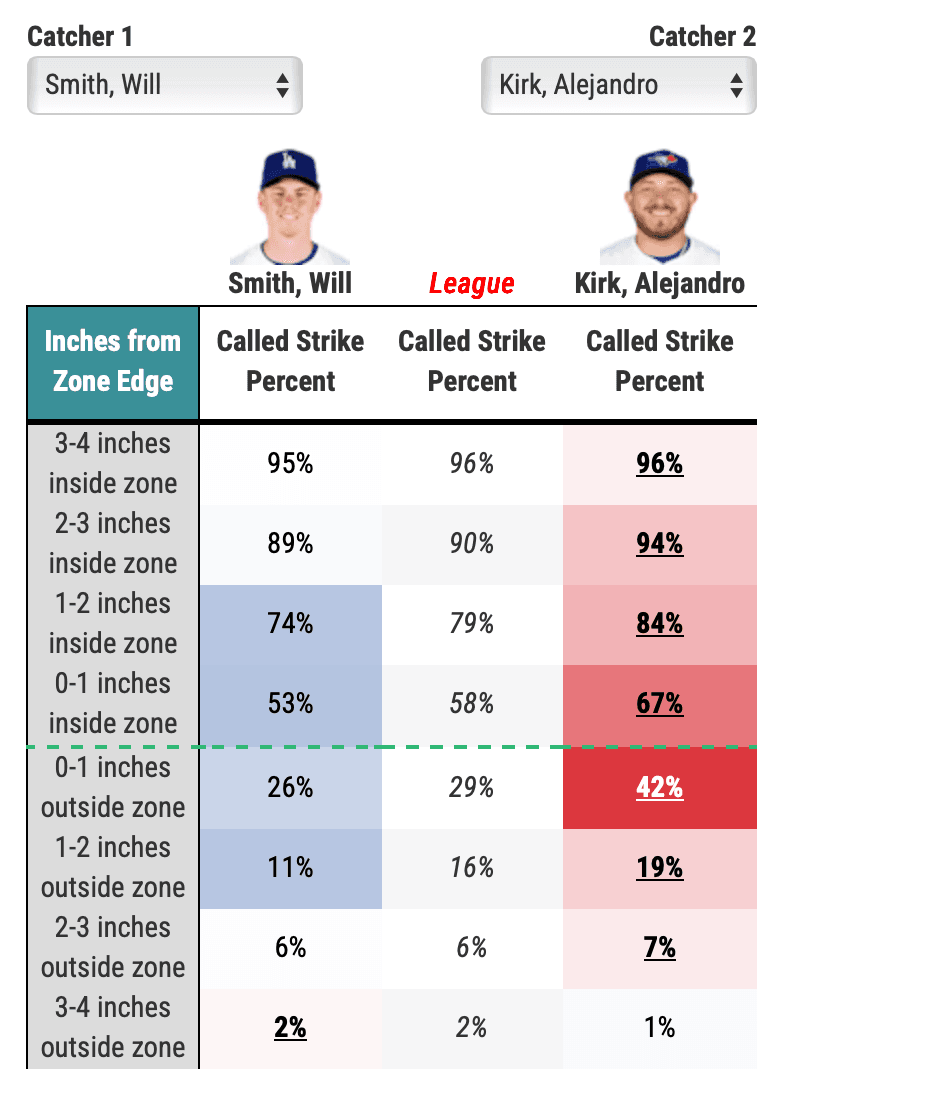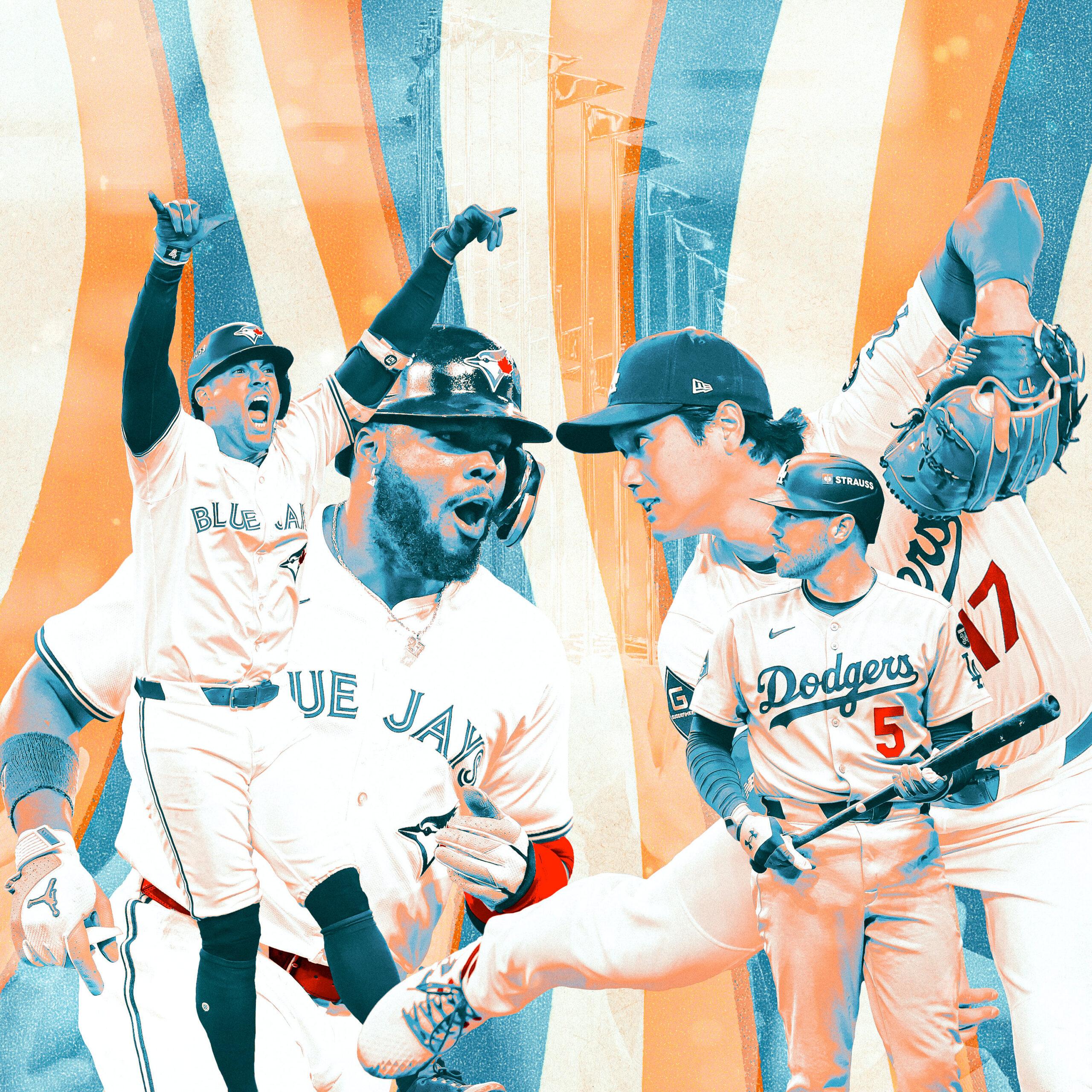The Los Angeles Dodgers’ chase to make history and become the first team to repeat as World Series champions since the 2000 Yankees begins on Friday night. A Dodgers World Series win is what was always supposed to happen, and it’s what oddsmakers expect to happen. Since they’ve only lost one of their 10 playoff games, there’s an aura of invincibility surrounding this incredible collection of baseball talent. Toronto is their challenger, and the Blue Jays are aiming to be one of the most unlikely champions in recent baseball history.
To wit: Toronto entered the year with the 20th best odds to win the Fall Classic, all the way down the board at 60-to-1. They were picked by oddsmakers preseason to finish last or second to last in their own division, and now they are four games from baseball invincibility.
While it’s easy to focus on the immense star power in this series from baseball machine Shohei Ohtani to ALCS MVP Vladimir Guerrero Jr., it’s more interesting to dive into the micro matchups that will decide this series around the margins.
Here are the six to watch:
1. Toronto’s high contact rates against the Dodgers’ strikeout-heavy starting staff
The biggest strength-on-strength matchup in the entire World Series is the Dodger pitching staff’s elite swing and miss stuff against the excellent bat-to-ball skills of Toronto’s lineup. No team in MLB struck out at a lower rate than the Blue Jays, and their plate skills (combined with improved bat speed for power) produced the league’s best offense from July 1 onward (highest wRC+ and WAR).
Since the playoffs began, Toronto’s offense has increased its swing rates and become even more aggressive. Their strikeout rate is even lower in the playoffs (14.8%) than it was during the regular season (17.8%). Despite this, the Jays are swinging at pitches at the highest rate of all 12 playoff teams. Their swing rates will likely increase even further if Bo Bichette returns to the Blue Jays lineup from injury. Bichette is one of the most aggressive hitters in all of baseball and loves to swing early in counts.
Toronto has faced good pitching in these playoffs and chased Max Fried, Carlos Rodon, Logan Gilbert, and George Kirby out of games. But they have not faced anything like the four-ace pitching machine the Dodgers assembled for this playoff run. Once Ohtani began pitching and Blake Snell and Tyler Glasnow returned from injury, the Dodgers rotation had a 28.4 percent strikeout rate in August and September. No other team was higher than 26.2 percent during that period. And against playoff lineups, the Dodgers’ numbers have remained basically the same (28.3 percent).
Outside of one bad Yoshinobu Yamamoto start against the Phillies, no one has touched the Dodgers’ starters in October. I guess we’ll get another test case of whether great pitching beats great hitting during this World Series.
2. The Dodgers lineup against the right-handed splitters of the Blue Jays’ top two starters
The Blue Jays’ top two starters in the playoffs have been rookie Trey Yesavage and veteran Kevin Gausman. Both rely heavily on their splitter as their primary out-pitch. Yesavage’s rapid rise in 2025 from Single-A to World Series Game 1 starter came as a direct result of his splitter’s dominance. It has produced an absurd 57.1% whiff rate this year and helped him strike out 22 batters in 15 playoff innings.
Gausman threw 1,138 splitters this season—376 more than every other pitcher in MLB. Hitters had a .181 batting average and .294 slugging percentage against it. Neither starter has a deep arsenal, but both have kept lineups off-balance anyway.
The bad news for Toronto is that the Dodgers have mostly crushed splitters all year. The Dodgers rank fourth in run value created against the pitch, with Freddie Freeman and Mookie Betts doing the most damage, specifically. Freeman and Betts have sub 30 percent whiff rates against the pitch and a .602 and .573 slugging percentage, respectively. On the contrary, Teoscar Hernandez and Enrique Hernández have especially struggled against splitters. Teoscar has a 52 percent whiff rate while Kiké has yet to register a hit in nine at-bats.
The Dodgers haven’t seen either of these starters this season, but for the most part, L.A. has crushed their best pitch.
3. Toronto lefties Mason Fluharty and Brendon Little against the Dodgers’ left-handed bats
The Phillies and Brewers had a clear plan to throw as many lefties as possible at Ohtani. For seven of those eight games, both pitching staffs kept the soon-to-be four-time MVP off-balanced at the plate. Ohtani went 1-for-18 with nine strikeouts against the Phillies after seeing a steady stream of southpaws for most of the series. The Brewers’ Aaron Ashby experience didn’t quite work out in Game 3, but Pat Murphy’s decision to use him as an opener in Games 1 and 3 was a clear plan to challenge Ohtani and Freeman with a high velocity southpaw immediately.
Toronto’s entire starting rotation is right-handed, and they only have two reliable lefty bullpen arms they’d use in a competitive game: Fluharty and Little. Most of the Jays’ most trusted relievers are right-handed, including closer Jeff Hoffman and fireman Louis Varland.
Ohtani and Freeman (and maybe even Max Muncy) are sure to see a lot of Fluharty and Little in the World Series. Fluharty’s cutter-sweeper combination did an excellent job limiting hard contact this year, even if his double-digit walk rates should concern the Blue Jays against a very patient and selective Dodgers lineup. Fluharty held lefties to a .182 batting average in the regular season, but he has allowed a run in three of his seven playoff outings this month.
Little allowed just a .195 average against lefties this year, but he isn’t consistent, either. His poor command burned the Blue Jays in Game 5 of the ALCS when he allowed a home run to Cal Raleigh and then walked both Jorge Polanco and Josh Naylor. The Mariners eventually hit a go-ahead grand slam. Little’s walk rate above 15 percent is as bad as any pitcher in baseball this year.
4. The first of two hidden Toronto edges that won’t show up in a normal box score
Pitch framing remains one of the most underdiscussed and underappreciated skills in all of baseball. Catchers are often judged defensively on their ability to block balls in the dirt or throw out runners, but pitch framing is just as important, harder to quantify, and less understood.
Toronto has a significant edge behind the dish in the World Series. Alejandro Kirk ranks second amongst 57 qualified players in catcher framing runs at +16, according to Baseball Savant. Will Smith is second to last at -10.
The below graphic illustrates how big the gap is on different pitch locations in 2025.

As we don’t yet have a challenge system or automatic balls and strikes, don’t be surprised if the Jays get an advantage in this series from the umpires. It won’t be because of the umpires’ bias, but because of Kirk’s deceptive ability to fool them into calling extra strikes.
5. The second of two hidden Toronto edges that won’t show up in a normal box score
Single season defensive statistics—and defensive metrics in general—can be quite noisy and not all that predictive because of the smaller sample size. However, the Blue Jays have been the best defensive team in baseball by fielding run value in back-to-back seasons. Toronto turns batted balls into outs better than everyone else all over the field. It’s not just Kirk’s pitch framing. Ernie Clement is a top 10 infielder in baseball and has been effective at third, where he’s played during the playoffs. Daulton Varsho has elite range in center field. The injury to Bichette means that Andres Gimenez has played shortstop, where he is a massive defensive upgrade.
When the Jays do have a lead late, they can bring in Myles Straw to play corner outfield, where he is extremely overqualified. The only hole in the Toronto defense would be the potential return of Bichette at second base, but it’s not yet clear how much he'll feature in this series.
6. Both bullpens vs. their own command issues
The biggest weakness for both of these rosters entering the playoffs has proven to be their major flaw in October, too: bullpens. As much as Roki Sasaki has shined as the Dodgers’ closer during these playoffs, the relievers have been quite shaky as a whole. Los Angeles has a 4.88 ERA this month, which is actually better than Toronto’s 5.52. The main driver of both bullpens’ issues is command. Both teams are giving out free passes at an alarming rate.
Playoff relievers walk rate:
Toronto 11.8 percent
Los Angeles: 15.1 percent
For all of the swings and misses that the Dodgers rotation produces, the bullpen is well below average at missing bats. It didn’t really get exposed in the Milwaukee series because the Brewers barely saw the bullpen, but it will be a really difficult managerial job for Dave Roberts to navigate if any of his starters falter and he has to use multiple relievers on back-to-back days. He’ll have to surf through the muddy waters without Alex Vesia, who is the Dodgers’ most trusted left-handed reliever, as he’s dealing with a personal matter and is off the roster.
This series projects to have plenty of scoring in the late innings, which could produce some wild swings and back-and-forth offense. You’d trust the Dodgers’ offense more to take their walks and apply constant pressure, but Toronto’s offense is plenty equipped to finally expose the weakness that the Dodgers have tried their best to shield throughout October.


